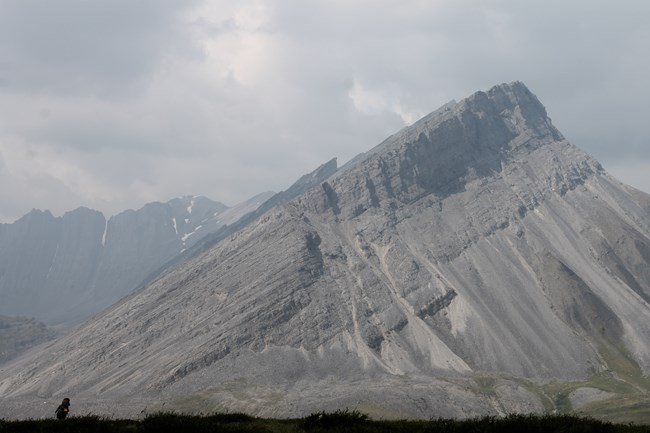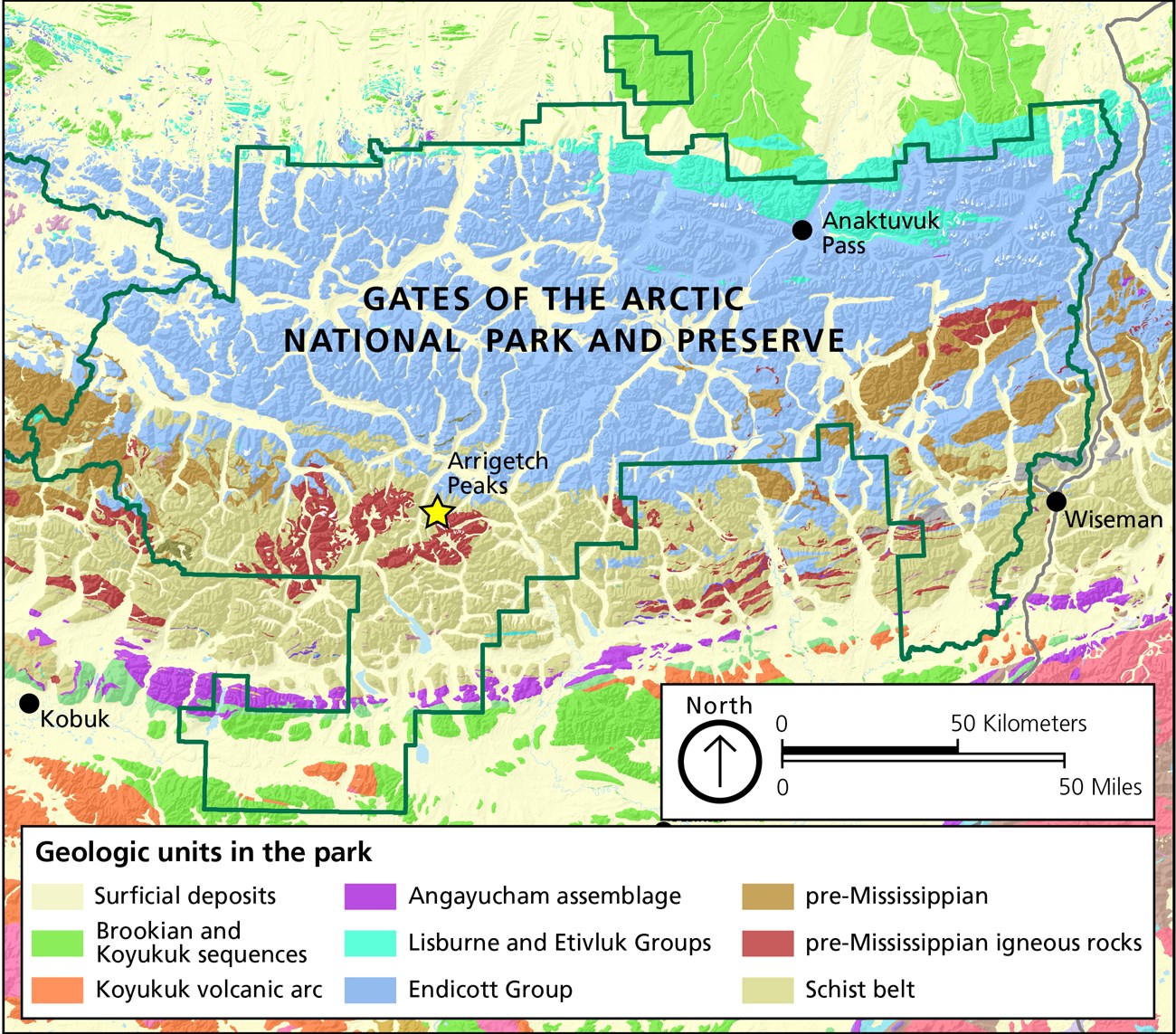
NPS/Rachel Sullivan Gates of the Arctic National Park and Preserve protects a landscape encompassing the central Brooks Range, a mountain range located completely north of the Arctic Circle. Like much of Alaska, these mountains were formed when large sections of the Earth's crust called terranes were transported here by the process of plate tectonics. Hiding within the layers of these terranes there can be fossils of once-living organisms from throughout history, some as old as 400 million years! 
Map modified from Wilson et al. (2015) The Arrigetch Peaks are made of granite, a type of igneous rock, that is distinctive from the schist belt, a type of metamorphic rock, that surrounds the peaks. Much of the park is underlain by the Endicott Group, a group of ancient sedimentary rocks that formed on the ocean floor millions of years ago. To delve into more detail about park geology visit the resources below!
Connecting Further
Additional NPS Resources |
Last updated: April 4, 2023
